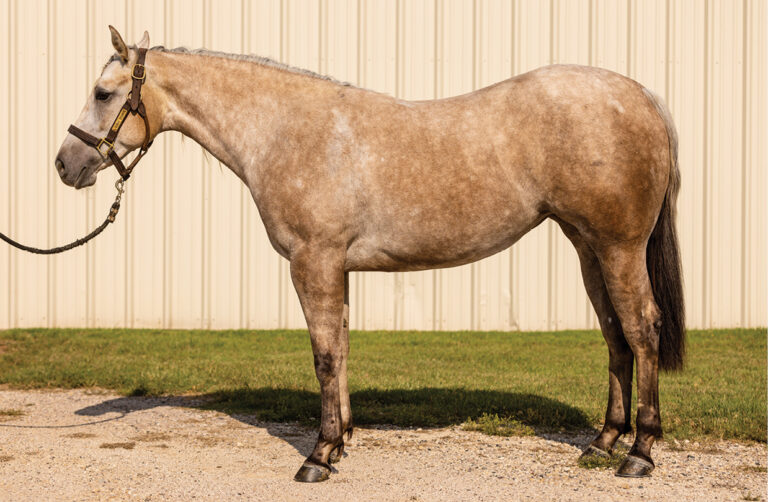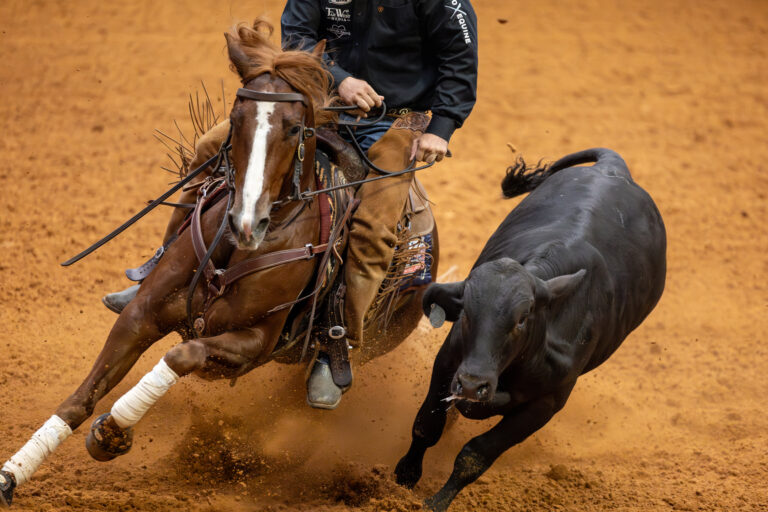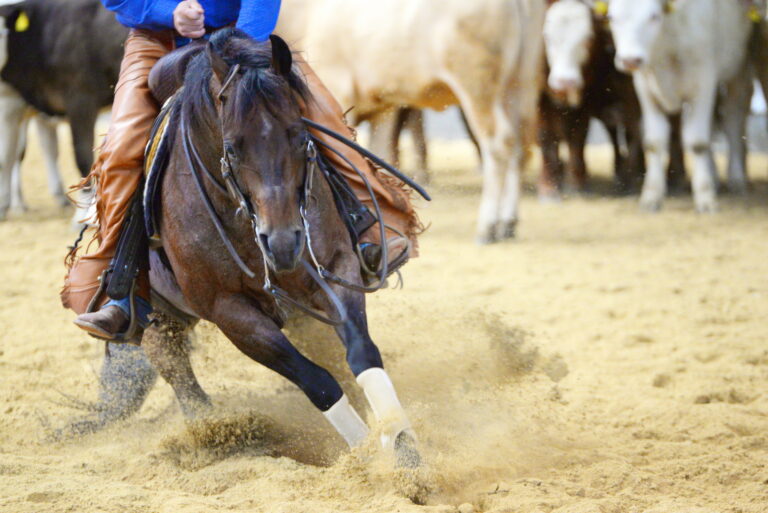Maintain your sanity and your horse’s health with an annual horse-maintenance schedule.
From feeding to vaccinations and everything in between, your horse’s health depends on your consistent care. By creating a seasonal schedule, you’ll keep your horse life in order all year, and your horse healthy and happy.
Create a Calendar

Spring:
• Administer dewormer.
• Administers initial vaccines.
• Mow pasture to prepare for summer turnout.
• Get on your preferred hay dealer’s purchase list.
• Schedule your first shoeing with your farrier (if applicable).
Summer:
• Prepare for summer travel a month before you hit the road.
• Plan turnout schedule and manage pasture.
Fall:
• Administer dewormer.
• Administer booster vaccines.
• Schedule with your farrier to have shoes pulled (if applicable).
Winter:
• Float teeth (or schedule around your event schedule).
Managing Feed
Horses are creatures of habit; sticking to a consistent feeding schedule keeps their stomach acids at bay and reduces the likelihood of colic or founder.
Depending on your horse and the time of year, you’ll want to be mindful of how long you turn him out, so he doesn’t overgraze or overeat. In the summer, if you have access to pasture, you can turn out all day and supplement with minimal hay or grain for seniors.
Avoid turning out immediately after a frost as the grass will be stressed, which increases its sugar ratio and your horse’s risk of founder.
Quality and affordable hay continues to get more challenging to find. If you have someone you regularly buy hay from, it’s a good idea to make an early commitment to them by getting on their waitlist. This will ensure that you can get first choice on hay for the colder months (or all year if you don’t have pasture).
Keep Them Protected
Vaccines: The current recommendation from the American Association of Equine Practitioners (AAEP) is to give a three-way vaccine to all horses, which includes Eastern and Western equine encephalomyelitis (EEE and WEE) and tetanus. Typically, you’ll also want to give a West Nile Virus vaccine.
If your horse is traveling or you have horses coming in and out of your herd, such as for boarding or training, you’ll also want to give the equine rhinopneumonitis and influenza vaccines. Give your first round of vaccines in the spring, and boosters in the fall.
Deworming: The recommended frequency to deworm your horse is twice a year, once in the spring and once in the fall. This is to prevent and eliminate parasites. Even if your horse isn’t actively shedding in their manure, continue to deworm regularly. To reduce parasite resistance, change which dewormer you administer each time.
Maintenance Routine
Feet: Your horse will need to be on a regular trimming calendar all year. If you’re someone who pulls your horse’s shoes in the winter, work backward from your first show, trail ride, or event to set a date for his first set.
Teeth: Your horse’s teeth need regular maintenance, especially as they age. Before you take a young horse to training, get their teeth floated. After that, schedule annual to bi-annual teeth checks and floating. As your horse gets older, schedule annual exams as they’ll start having issues such as rough edges, which make eating difficult.
[Keep Your Senior Horse Feeling Good Year-Round]
Prepare Your Precautions
Travel: If you want to go anywhere, you’ll need all your documents in order, including a negative Coggins test, health certification, and brand inspection. When you cross state lines, you’re susceptible to inspection. For this reason, it’s best to prepare ahead of time.
When you get ready to travel, put your vet on notice. They’ll need to start with your Coggins test. You need a negative Coggins before you can get your health certificate, too. Once your results are back—and within seven days of your trip date—your vet will complete a health certificate. While not all states require a brand inspection, it may be worth getting one anyway. If you plan to keep your horse, you can get a lifetime brand inspection, so you’re always covered.

Emergencies: With horses, anything can happen, so it’s best to be prepared for emergencies. At the end of each year, do a safety check on your at-home emergency kit. Make sure everything is orderly, that you have all the supplies you need, and that medications aren’t expired. Do the same with your travel kit before you hit the road. If you use any of your supplies, replenish them immediately.




